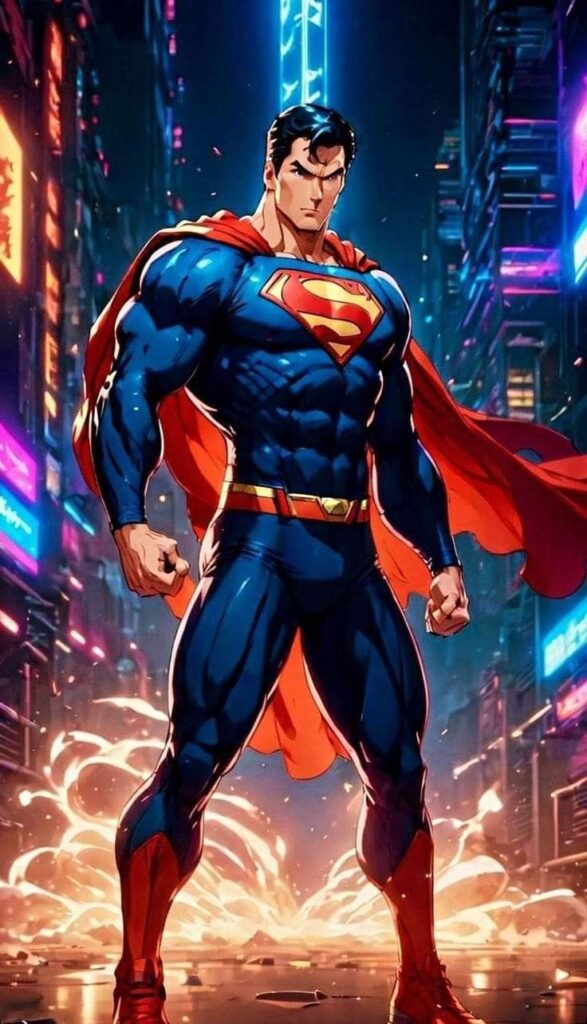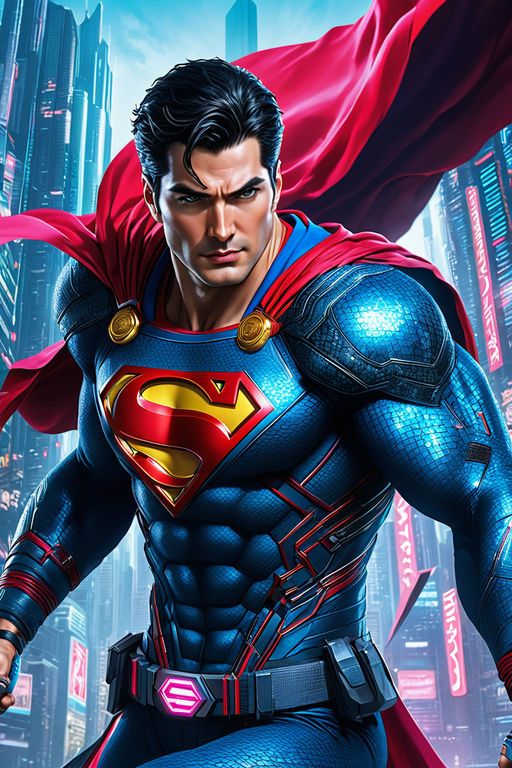I. The Birth of Superman

Superman was created in 1938 by Jerry Siegel and Joe Shuster, two sons of Jewish immigrants in Cleveland, Ohio. He first appeared in Action Comics #1, published by what would eventually become DC Comics. At a time when the world was entering the throes of war and economic depression, Superman was envisioned as a modern myth, a symbol of hope and justice when both seemed in short supply.
Originally, was a science fiction concept — the last son of Krypton, a doomed planet, who crashes on Earth as a baby and is adopted by a kindly farming couple in Kansas. Raised as Clark Kent, he learns humility, kindness, and responsibility from his adoptive parents, Jonathan and Martha Kent. As he grows, he discovers that Earth’s yellow sun gives him superhuman abilities. Rather than using these powers for selfish gain, he chooses to become a protector of humanity, donning the persona of Superman.
II. Powers and Purpose: The God Among Men
Superman is often described as a god-like being among mortals. His powers — including super strength, speed, flight, heat vision, invulnerability, and more — make him nearly unbeatable. But what makes truly powerful is not his abilities, but his moral compass. He chooses not to dominate, but to serve. He is a symbol of restraint, responsibility, and righteousness.
This is where Superman differs from many other heroes. He is not born from tragedy like Batman, or by accident like Spider-Man. is a deliberate choice. Despite his immense power, he seeks to live as a man, guided by values rather than vengeance. He is a messianic figure, often likened to religious archetypes — a savior sent from above, raised humbly, who ultimately sacrifices and protects humanity.
III. Clark Kent: The Man Behind the Symbol
Clark Kent, the “mild-mannered reporter,” is often misunderstood as a disguise. But for many interpretations, Clark is the true self — the man raised in Smallville, instilled with Midwestern values, humility, and a deep love for humanity. Superman is the persona he dons to act upon his values. Clark Kent is the bridge between godhood and humanity, the grounding force that prevents Superman from becoming distant or tyrannical.
The duality between Clark and raises philosophical questions: Who is the real identity? Is Superman an alien pretending to be human, or a human with alien powers? This question has fueled decades of storytelling and thematic exploration.
IV. Thematic and Philosophical Core
- Hope: In his chest emblem — often interpreted as the Kryptonian symbol for hope — Superman represents the enduring optimism of humanity.
- Morality and Ethics: Superman faces not only physical battles but moral ones — often forced to make impossible choices that test his principles.
- Alienation: As the ultimate outsider, Superman is a metaphor for the immigrant experience — someone from another world trying to fit in and serve a world that isn’t his.
- Power and Responsibility: Long before Spider-Man’s famous maxim, Superman’s story asked: What should someone with great power do with it?
V. Evolution Through Eras
Golden Age (1938–1950s):
Superman began as a social crusader — fighting corrupt landlords, abusers, and war profiteers. He was more rough-edged and populist.
Silver Age (1950s–1970s):
This era expanded Superman’s mythology — introducing Krypton, Supergirl, the Fortress of Solitude, and the Phantom Zone. Stories became more fantastical and science-fiction based.
Bronze Age to Modern Age (1970s–1990s):
Writers like Denny O’Neil, John Byrne, and Alan Moore humanized , grounding his stories and exploring his psychology. Moore’s “Whatever Happened to the Man of Tomorrow?” is a poignant elegy to Superman’s Silver Age.
21st Century:
Modern comics and films often present Superman as a complex, even conflicted figure — questioning his place in a cynical world. Works like All-Star Superman by Grant Morrison return to the mythic core of Superman as an inspirational figure, while films like Man of Steel (2013) portray him as a lonely, searching soul burdened by expectation.

VI. Superman in Film, TV, and Beyond
Christopher Reeve’s portrayal (1978–1987) is often seen as the definitive : charming, noble, and hopeful.
Henry Cavill’s Superman (2013–2023) introduced a more introspective, alienated version, mirroring post-9/11 fears and global uncertainty.
TV shows like Smallville, Lois & Clark, and Superman & Lois explore the human side of the character in more grounded, serialized forms.
Animation, especially in the DC Animated Universe (Superman: The Animated Series, Justice League), has been lauded for balancing action with character depth.Christopher Reeve’s portrayal (1978–1987) is often seen as the definitive Superman: charming, noble, and hopeful.
Henry Cavill’s Superman (2013–2023) introduced a more introspective, alienated version, mirroring post-9/11 fears and global uncertainty.
TV shows like Smallville, Lois & Clark, and Superman & Lois explore the human side of the character in more grounded, serialized forms.
Animation, especially in the DC Animated Universe (Superman: The Animated Series, Justice League), has been lauded for balancing action with character depth.
VII. Cultural and Symbolic Impact
- Superman transcends his role as a fictional character — he is a cultural archetype. He has been invoked in political speeches, philosophical debates, religious sermons, and academic discussions. He represents:
- The Immigrant Ideal: A stranger from a distant land who enriches and protects his new home.
- The Ultimate Idealist: Someone who believes that humanity, despite its flaws, is worth saving.
- The Mirror to Humanity: Though he is not human, Superman reflects our highest aspirations and values — reminding us of what we could be at our best.
Conclusion: The Everlasting Legend
Superman is more than a superhero — he is a myth for the modern age, a timeless figure who has evolved with us, challenged us, and inspired us for nearly a century. He embodies the best of what we can be: strong yet gentle, powerful yet humble, alien yet deeply human.



